University Name: Strategic Management and Cultural Web Analysis
VerifiedAdded on 2022/08/31
|5
|582
|19
Report
AI Summary
This report provides an analysis of the cultural web within the context of strategic management, focusing on key elements such as routines, rituals, stories, symbols, power structures, organizational structures, and control systems. It examines how these elements interact and influence an organization's culture and its ability to adapt to change. The report emphasizes the importance of understanding the cultural web for effective strategic actions, risk assessment, and change management. It also highlights the role of leadership in navigating change processes, considering factors like cultural compatibility and the management of resistance. The analysis draws on various sources to provide a comprehensive overview of the cultural web's significance in achieving organizational goals within a global context.
1 out of 5
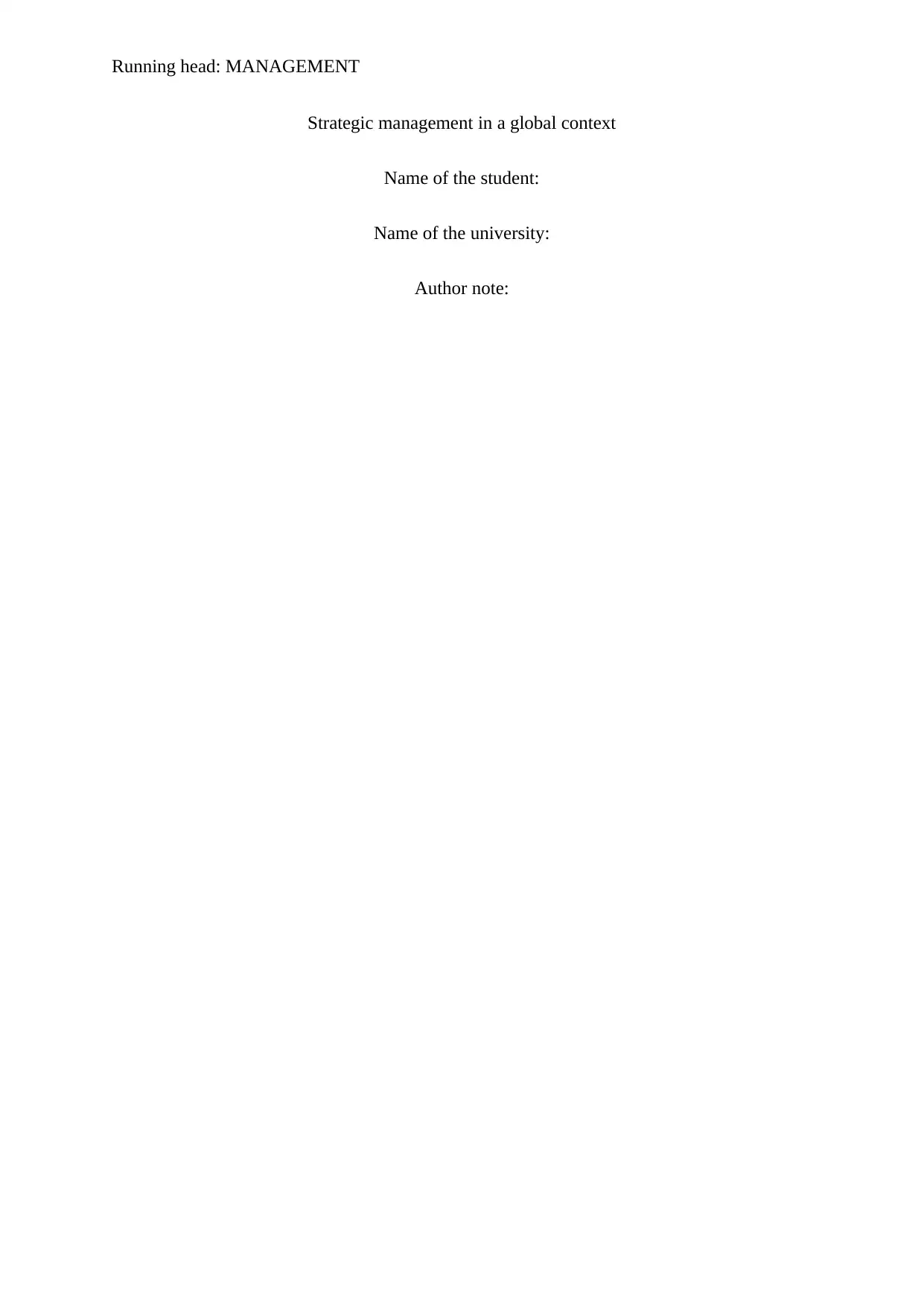
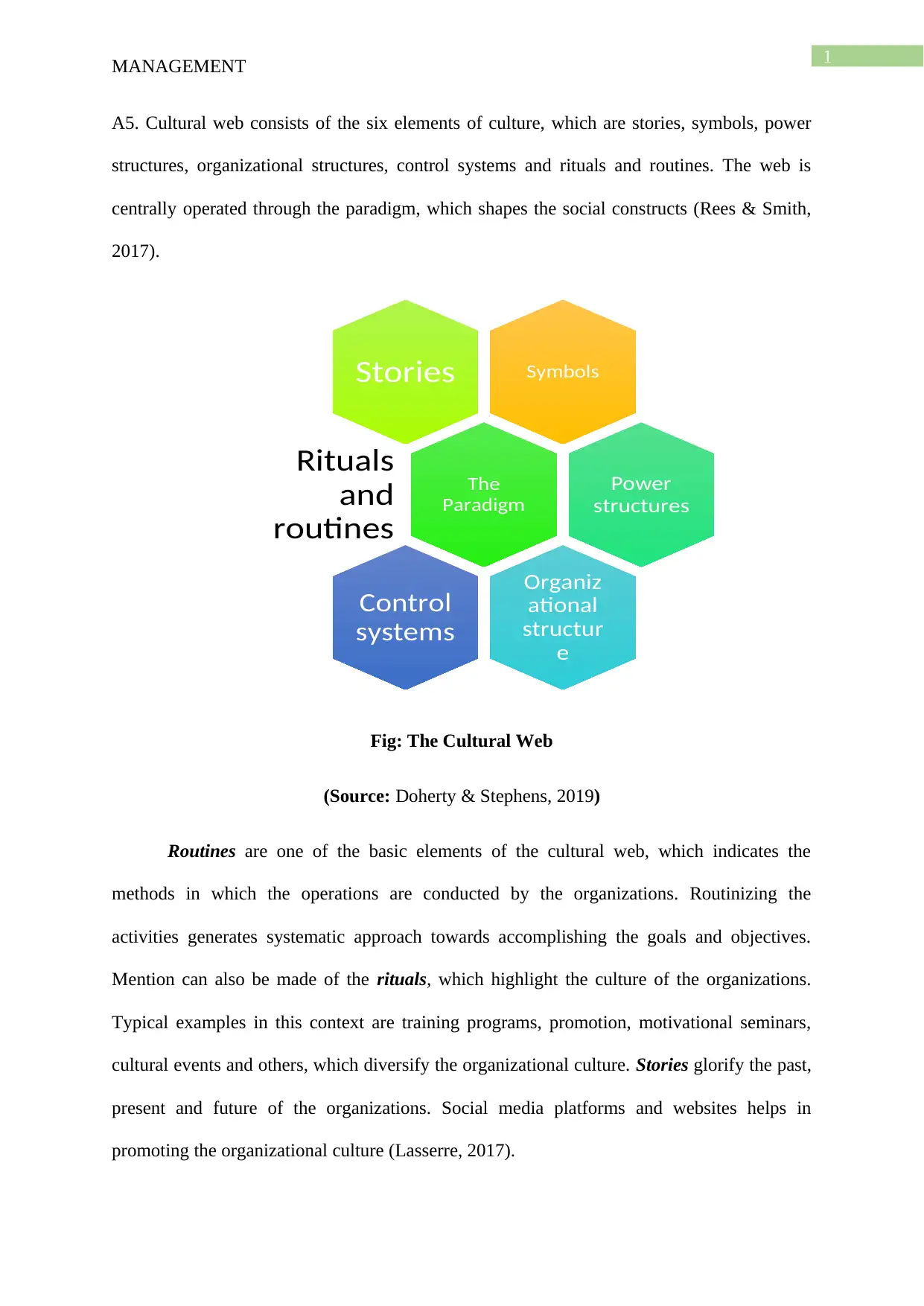
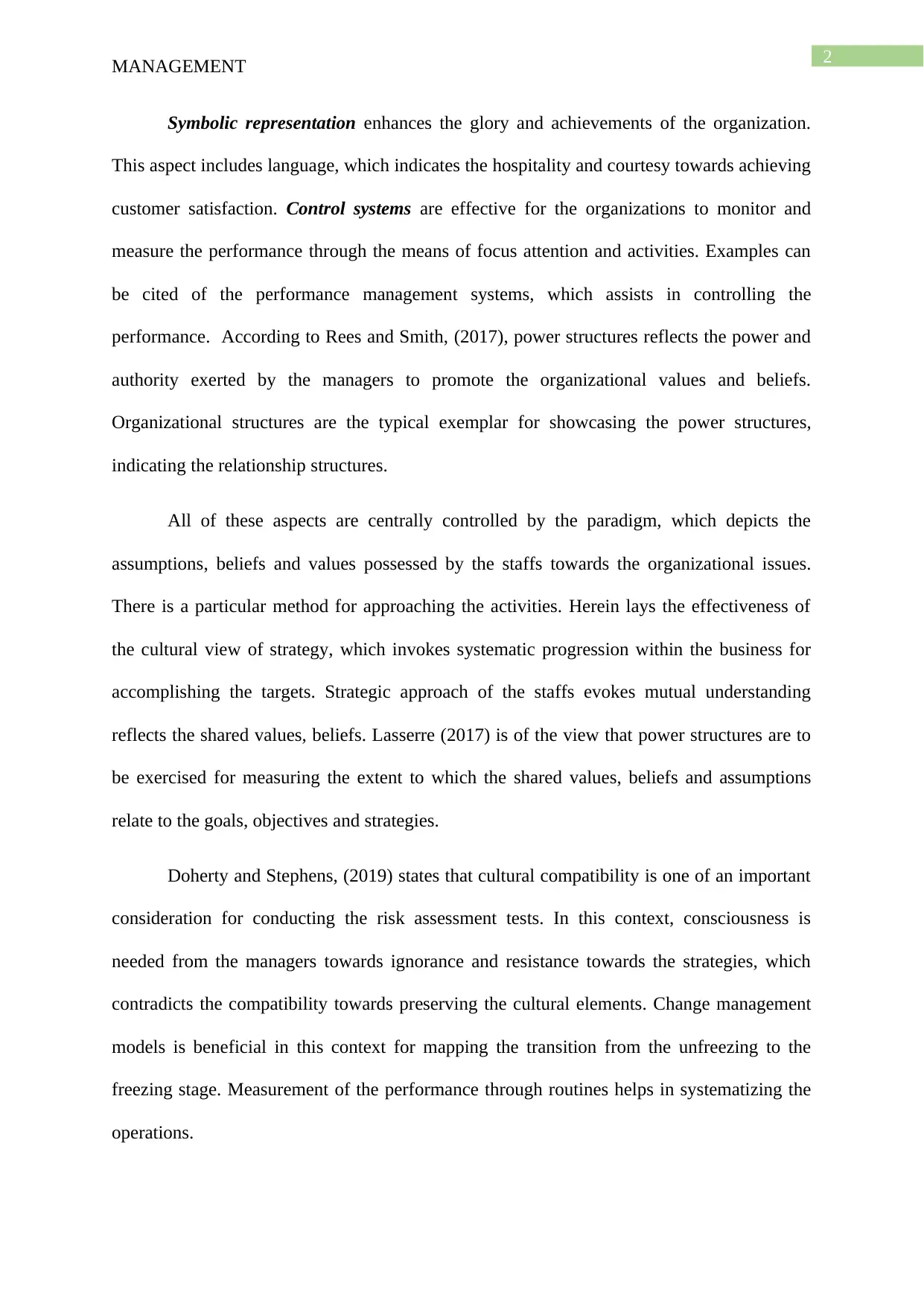

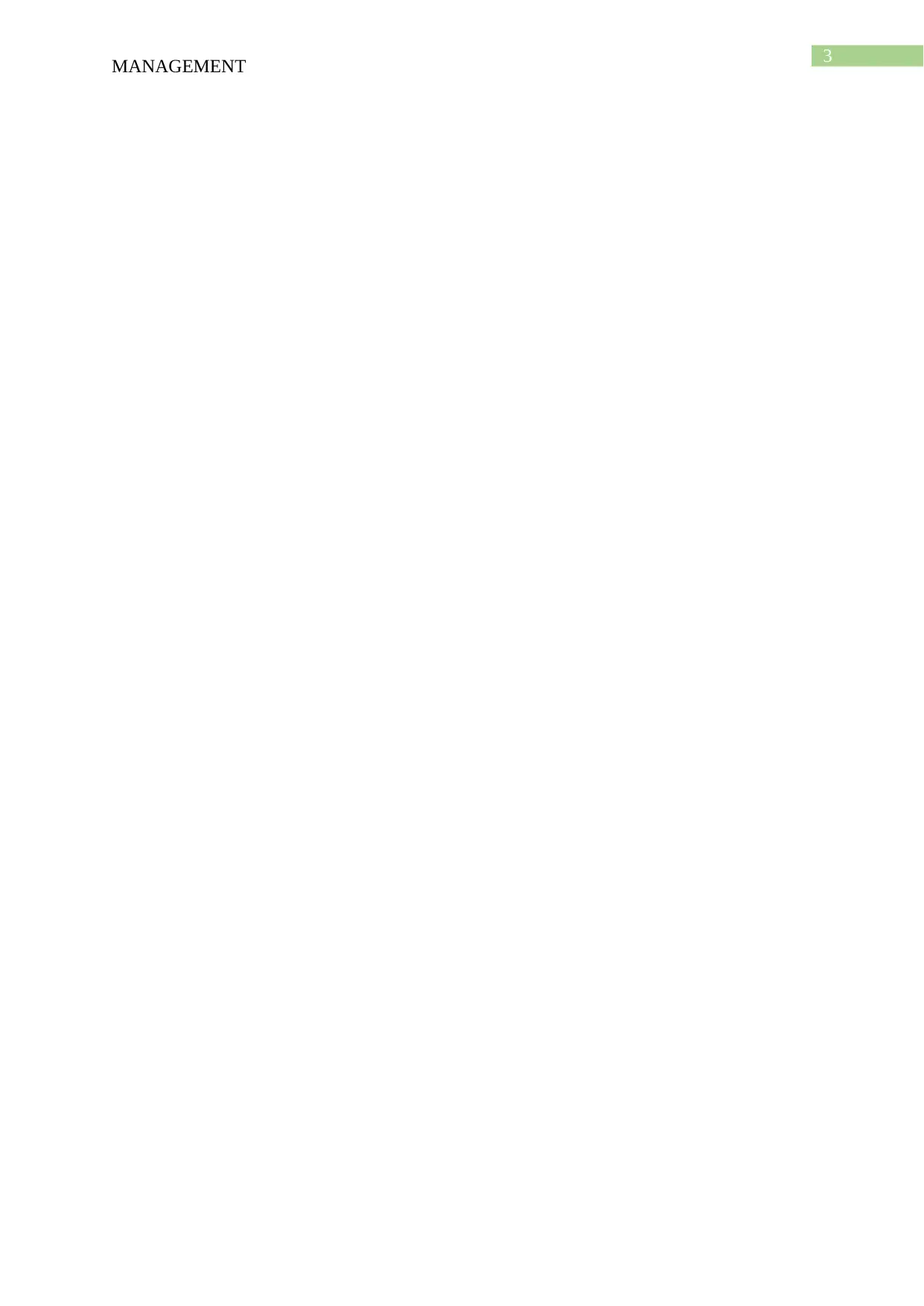
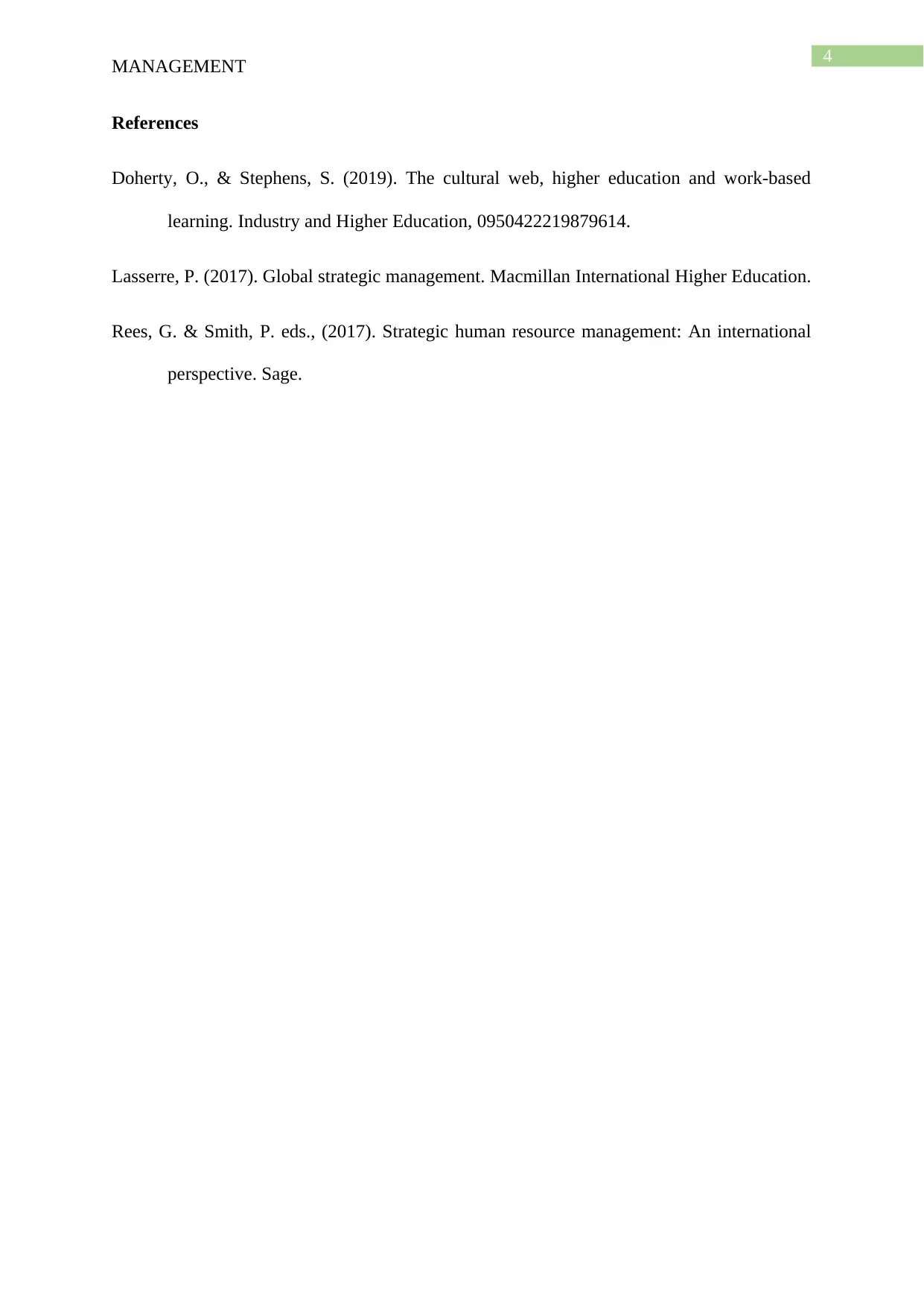





![[object Object]](/_next/static/media/star-bottom.7253800d.svg)